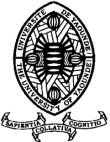Reproductibilité Interobservateurs du Score de Gleason et du Grade ISUP dans les Cancers Prostatiques au Cameroun
DOI:
https://doi.org/10.5281/hra.v2i3.5353Keywords:
reproductibility, Gleason score, ISUP grade, Kappa CoefficientAbstract
RÉSUMÉ
Introduction. Le score de Gleason est le critère pronostique par excellence du cancer de la prostate. Il est impératif qu’il y ait une bonne reproductibilité du score de Gleason afin de permettre une prise en charge optimale des patients. Cependant, une variabilité inter observateurs est décrite dans le monde. Notre objectif était d’évaluer la reproductibilité inter observateurs du score de Gleason et conséquemment du grade ISUP au Cameroun. Méthodologie. Il s’agissait d’une étude transversale analytique sur une durée de 07 mois allant du 1er Février au 31 Juillet 2023. Nous avons sélectionné 182 lames provenant de 53 patients. Ces lames ont été soumises à l’appréciation de 4 pathologistes afin qu’ils déterminent le score de Gleason et le grade ISUP. Les différents résultats ont été analysés à l’aide du logiciel SPSS. Résultats. L’âge moyen des patients était de 72,87 ans. Le taux moyen de PSA était de 128,92 ng/ml variant entre 1 et 1600 ng/ml. La biopsie était le type de prélèvement le plus représenté. Les prélèvements étaient de qualité satisfaisante dans 77,36% des cas, 81,13% étaient accompagnés de renseignements cliniques. Les coefficients kappa combinés du score de Gleason et grade ISUP étaient respectivement de 0,357 et 0,384. Un accord faible entre les pathologistes 1 et 2 ; 1 et 3 ; 2 et 4. Par contre nous avons trouvé un accord fort entre les pathologistes 2 et 3. Conclusion. Il existe un accord faible entre les pathologistes camerounais lors de l’évaluation du score Gleason et du grade ISUP.
ABSTRACT
Introduction. The Gleason score is the gold standard prognostic criteria for prostate cancer. It is crucial to have good reproducibility of the Gleason score in order to provide optimal patient management. However, inter-observer variability has been reported worldwide. Our objective was to evaluate the inter-observer reproducibility of the Gleason score and consequently the ISUP grade in Cameroon. Methodology. This was a cross-sectional analytical study conducted over a period of 7 months from February 1st to July 31st, 2023. We selected 182 slides from 53 patients. These slides were evaluated by 4 pathologists to determine the Gleason score and ISUP grade. The results were analyzed using SPSS software. Results. The mean age of the patients was 72.87 years. The mean PSA level was 128.92 ng/ml, ranging from 1 to 1600 ng/ml. Biopsy was the most common type of sample. The samples were of satisfactory quality in 77.36% of cases, and 81.13% were accompanied by clinical information. The combined kappa coefficients for the Gleason score and ISUP grade were 0.357 and 0.384, respectively. There was poor agreement between pathologists 1 and 2; 1 and 3; and 2 and 4. However, we found strong agreement between pathologists 2 and 3. Conclusion. There is poor agreement among Cameroonian pathologists in evaluating the Gleason score and ISUP grade.
References
Tumor Staging and Grading: A Primer [Internet]. [cited 11 November 2022]. Available at: https://www.researchgate.net/publication/51789819_Tumor_Staging_and_Grading_A_Primer
Lillaz J, Delorme G, Guichard G, Bernardini S, Chabannes E, Bittard H, et al. Fiabilité des biopsies prostatiques pour l’étude de la topographie tumorale dans le cancer de prostate. Prog En Urol. 01 Junie 2012;22(7):408–14.
Flach RN, Willemse PPM, Suelmann BBM, Deckers IAG, Jonges TN, van Dooijeweert C, et al. Significant Inter- and Intralaboratory Variation in Gleason Grading of Prostate Cancer: A Nationwide Study of 35,258 Patients in The Netherlands. Cancers. Januarie 2021;13(21):5378.
Sow M, Essane A, Nkegoum B, Mbakop A. Biopsie de la prostate: Indications, technique et résultats. Médecine D’Afrique Noire. 2004;48(4):159–62.
Berg KD, Thomsen FB, Nerstrøm C, Røder MA, Iversen P, Toft BG, et al. The impact of the 2005 International Society of Urological Pathology consensus guidelines on Gleason grading - a matched-pair analysis. BJU Int. Junie 2016;117(6):883–9.
Ozkan TA, Eruyar A, Cebeci O, Memik O, Ozcan L, Kuşkonmaz I. Interobserver variability in Gleason histological grading of prostate cancer. undefined [Internet]. 2016 [cited 11 November 2022]; Available at: https://www.semanticscholar.org/paper/Interobserver-variability-in-Gleason-histological-Ozkan-Eruyar/e10ec45cc33602adfba865f32cd40a9c026cdf90
Kamadjou C, Ambomatei C, Mbouche L, Sando Z, Mbassi A, Angwafor F. Hormone-Naïve Metastatic Prostate Cancer: A Presentation of 110 Cases in a Urology Center in the City of Douala, Cameroon. Open J Urol. 10 Januarie 2022;12(1):83–97.
Engbang NJP, Sala B, Moby H, Fonkwa C, Essomba B, Sime JE, et al. Cancers urogénitaux dans la région du littoral-Cameroun : épidémiologie et histopathologie. Rev Médecine Pharm [Internet]. 07 Oktober 2014 [cited 04 November 2023];4(2). Available at: https://www.ajol.info/index.php/rmp/article/view/108532
Pernar CH, Ebot EM, Wilson KM, Mucci LA. The Epidemiology of Prostate Cancer. Cold Spring Harb Perspect Med. 12 Januarie 2018;8(12):a030361.
Salomon L. Le score de Gleason pour les nuls. Prog En Urol - FMC. Maart 2014;24(1):F13–5.
Pudasaini S, Subedi N. Understanding the gleason grading system and its changes. J Pathol Nepal. 29 September 2019;9(2):1580–5.
Hernandez DJ, Nielsen ME, Han M, Partin AW. Contemporary Evaluation of the D’Amico Risk Classification of Prostate Cancer. Urology. 01 November 2007;70(5):931–5.
Al Rikabi AC, Alkhalidi H. Interobserver variations in reporting of prostatic adenocarcinoma using core biopsy specimens: a retrospective study from a tertiary referral hospital in Saudi Arabia. East Mediterr Health J. 01 September 2014;20(09):578–81.
Ambroise N, Philip O, Flora SAJ, Florent TMJG, Sabine EMB, Etienne AO, et al. Epidemiology and diagnosis of prostate cancer: a study in the city of Douala (Cameroon). Health Sci Dis [Internet]. 25 Junie 2023 [cited 27 Augustus 2023];24(7). Available at: https://www.hsd-fmsb.org/index.php/hsd/article/view/4594
Jean Paul Ndamba Engbang, Beyeme Sala, Herve Moby, Yoan Ligan, Godefroy Simo, ean Louis Oyono Essame. Epidemiomorphology of Prostate Cancer in Cameroon: About 1047 Cases. Journal of Cancer and Tumor International. 2017;1–8.
Mapoko BE, Nganwa G, Mokube MN, Menzy-Ndjole C, Sone AM, Ndom P, et al. Exhaustivité des Renseignements Cliniques Parvenant au Service d’Anatomie Pathologique de l’Hôpital Gynéco-Obstétrique et Pédiatrique de Yaoundé. Health Sci Dis [Internet]. 08 September 2020 [cited 27 Augustus 2023];21(9). Available at: https://www.hsd-fmsb.org/index.php/hsd/article/view/2262
Ergün M, İslamoğlu E, Yalçınkaya S, Tokgöz H, Savaş M. Does length of prostate biopsy cores have an impact on diagnosis of prostate cancer? Turk J Urol. September 2016;42(3):130–3.
Riedinger CB, Womble PR, Linsell SM, Ye Z, Montie JE, Miller DC, et al. Variation in prostate cancer detection rates in a statewide quality improvement collaborative. J Urol. Augustus 2014;192(2):373–8.
Mekeme JBM, Mbouche OL, Bello F, Awondo BC, Mbassi AA, Fouda CJ, et al. Comparison of Transrectal Prostate Digital and Ultrasound-Guided Core Biopsies in 400 Men in a Low-and-Middle Income Country. Open J Urol. 10 Oktober 2023;13(10):418–32.
McKenney JK, Simko J, Bonham M, True LD, Troyer D, Hawley S, et al. The Potential Impact of Reproducibility of Gleason Grading in Men With Early Stage Prostate Cancer Managed by Active Surveillance: A Multi-Institutional Study. J Urol. Augustus 2011;186(2):465–9.
Melia J, Moseley R, Ball RY, Griffiths DFR, Grigor K, Harnden P, et al. A UK-based investigation of inter- and intra-observer reproducibility of Gleason grading of prostatic biopsies. Histopathology. Mei 2006;48(6):644–54.
Bori R, Salamon F, Móczár C, Cserni G. [Interobserver reproducibility of Gleason grading in prostate biopsy samples]. Orv Hetil. 04 Augustus 2013;154(31):1219–25.
Valdez AL, So J. Interobserver Variability of Gleason Score and Completeness of Histopathology Report in Prostatic Adenocarcinoma in Prostate Needle Biopsy Specimens Among General Pathologists in a Multi-institutional Setting. PJP. 16 September 2018;3(2):13–13.
Allsbrook WC, Mangold KA, Johnson MH, Lane RB, Lane CG, Amin MB, et al. Interobserver reproducibility of Gleason grading of prostatic carcinoma: Urologic pathologists. Hum Pathol. 01 Januarie 2001;32(1):74–80.
Downloads
Published
How to Cite
Issue
Section
License
Authors who publish with this journal agree to the following terms:
- Authors retain copyright and grant the journal right of first publication with the work simultaneously licensed under a Creative Commons Attribution License CC BY-NC-ND 4.0 that allows others to share the work with an acknowledgement of the work's authorship and initial publication in this journal.
- Authors are able to enter into separate, additional contractual arrangements for the non-exclusive distribution of the journal's published version of the work (e.g., post it to an institutional repository or publish it in a book), with an acknowledgement of its initial publication in this journal.
- Authors are permitted and encouraged to post their work online (e.g., in institutional repositories or on their website) prior to and during the submission process, as it can lead to productive exchanges, as well as earlier and greater citation of published work










